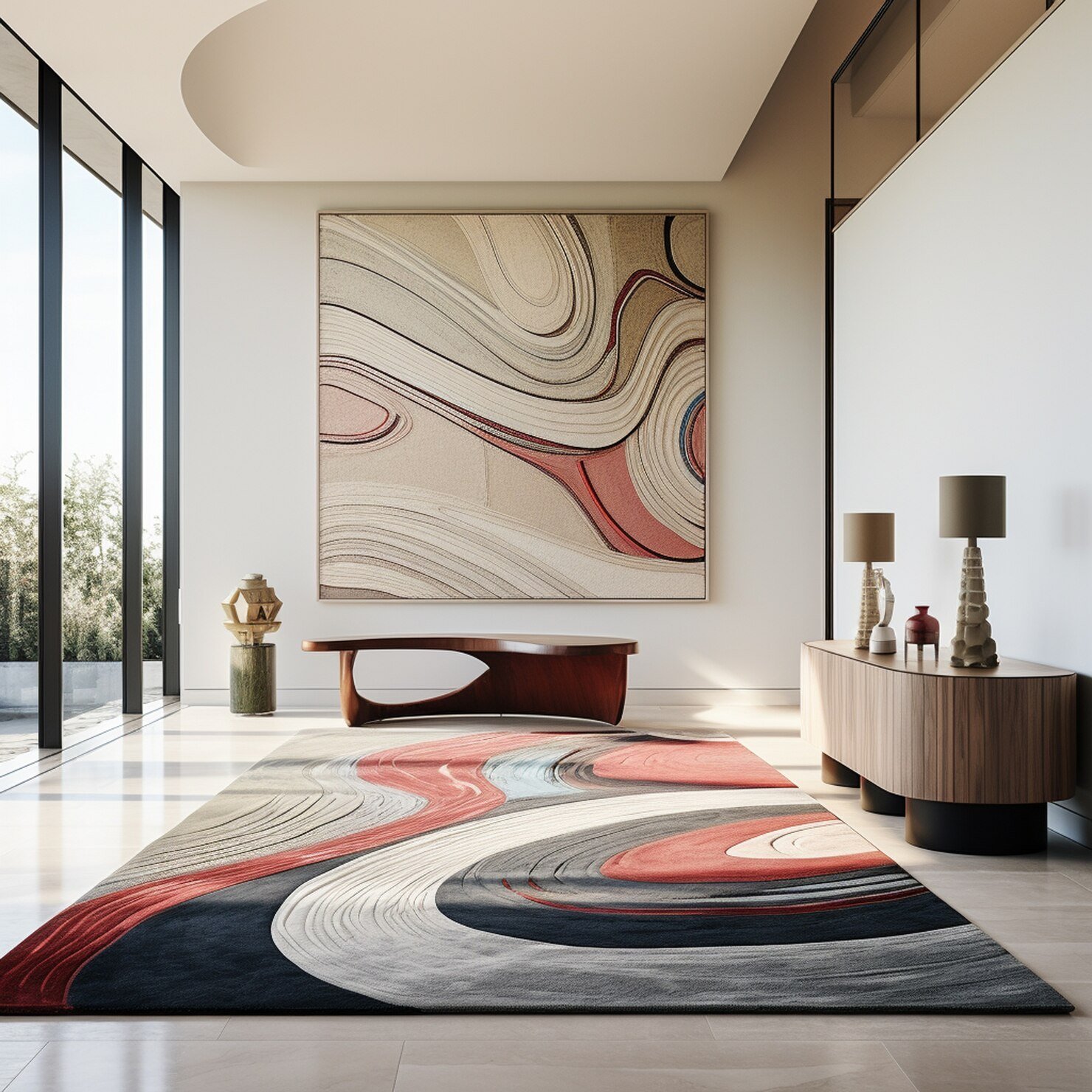Cleaning Facts
Why We Vacuum
There has always been debate among carpet cleaners about pre-vacuuming before carpet cleaning. Let’s get this out of the way: there is overwhelming evidence that pre-vacuuming dramatically improves results and makes cleaning easier for the carpet cleaner. Industry experts state that 74 percent to 79 percent of carpet soils are dry particulate matter, and are best removed by dry vacuuming. That’s why the IICRC carpet-cleaning standards list dry soil removal as the first principle. Now, this sounds nice in the textbooks and the seminars, but let’s get to the real world. The fact is that most carpet cleaners do not pre-vacuum. Estimates run as high as 70 percent, and some say it is even higher. Most carpet cleaners that do not pre-vacuum believe their equipment removes the dry soil during cleaning. This puzzling situation warrants a closer look.

We had a customer whose home we cleaned on a regular basis. On our next job we vacuumed half the carpet in the house, and then cleaned all of it. I received a call from the customer less than three months later that something was wrong with her carpet. Now, we normally cleaned her carpet every six months, and I knew she was a pretty good housekeeper. When I went back to inspect the problem, I couldn’t believe what I saw. The areas we did not vacuum were noticeably more soiled than the areas where we had pre-vacuumed. Her living room and dining room were adjacent to each other, and we had purposely vacuumed the opposite ends of each room; the poor woman’s house looked like a checkerboard! Naturally, we re-cleaned her carpet – pre-vacuuming all of it this time.
If you take a pile of dirt and dump it in the center of a room and then go after it with a vacuum cleaner, it may take some time but you will remove that dry soil. Now take the same pile of dirt and dump a bucket of water on it. Trying to vacuum up the mud is total lunacy. So applying pre-spray without dry vacuuming is just making the job that much harder. But the real reason most cleaners don’t pre-vacuum is marketing. They have positioned themselves where price is the most important factor in being chosen by the customer. What this means is that they’re not charging enough to take the time to pre-vacuum.
Many cleaners will say that they tell their customers to vacuum before they arrive. In fact, when I ran a large department store carpet-cleaning operation that was the way we did it. But we discovered that “vacuuming” was widely interpreted by our customers, and could mean that they pushed a straw broom across the carpet or did nothing at all. Nevertheless, we went in there and did our job. And when we were done, the carpet looked good. But like most cleaners, we were always trying to find ways to achieve better cleaning results. And so one day we decided to take a challenge presented to me by Jeff Bishop.

Carpet Sanitizer
Well-maintained carpets and upholstery help ensure a healthy home environment by reducing the amount of dust and allergens present. First Class Floor Care can apply a special carpet deodorizer and sanitizer to reduce unhealthy bacteria in your carpets. Request the Healthy Home Package, which includes our sanitizer and deodorizer formula, for your next cleaning appointment. Carpet sanitizer is designed to protect your home from allergens which plague most households. Common allergens ‘hiding’ in the home environment include:
Dust mites are microscopic arachnids found anywhere there is dust. Just one gram of dust can contain anywhere from 100 to 500 dust mites. Pet dander is small scales of skin shed by animals. Mold spores are microscopic fungal “seeds” that thrive in damp areas of the home, such as the basement, kitchen, and bathroom. Carpet and upholstery dust harbors millions of fungal spores. Cockroaches are common, unseen house guests. Their body parts and droppings are highly allergenic. Pollen is the microscopic reproductive component of flowering plants and trees. It enters the home from outdoors and is a common component of house dust. Allergens are constantly tracked into the home from outdoors.
Some are present in the home because of pets, while others (such as mold) grow in damp areas. Research has shown that indoor carpet environments act as a collector for these allergens. When carpets are not professionally cleaned regularly, these particles can become airborne.
Dust Mite Allergens
The first step in eliminating the dust mite allergen is a thorough cleaning of the home, including hot water extraction of the carpet, rugs, upholstery. Laboratory studies demonstrated that when dust mite droppings are treated with the main active ingredient contained in our sanitizer, the allergens are denatured, rendering them harmless to people who display allergic systems to dust mite allergens.
We believe our sanitizer to be the most effective and safest product available today for surface treatment of dust mite allergens. Dust Mite Anit-Allergen is derived from naturally occurring extracts found in plants and trees. It works by instantly deactivating the allergen found in dust mite droppings.
Dust Mite Allergen Benefits
– Suitable for carpets, bedding, mattresses, and all household furnishings.
– Effectively controls major causes of asthma.
– Not harmful to humans or animals.
– Environmentally friendly.
– Not a drug or a pesticide.
– Contains no CFCs and is fully biodegradable.
– Proven in studies to be effective in rendering dust mite allergens harmless.
Carpet Wear
Carpet Myths
ATLANTA, Ga. — The Carpet and Rug Institute (CRI)
The industry trade association, is committed to educating people about carpet and to dispel untruths and myths. “The suggestion that carpet causes indoor air quality problems is a significant issue for the carpet industry to address,” said Werner Braun, president of CRI. “Through research, CRI offers information that is valuable to medical professionals and to anyone living with carpet.” The following myths have been identified as the top 10 most persistent misconceptions, according to Braun.
Myth No. 1:
“There are health risks associated with carpet.” Truth: An extensive toxicological assessment of components of carpet concluded that the chemicals in carpet pose no health risks of public concern. Reference: In 1994, Environ Corporation of Arlington, Va., prepared a study, Safety Assessment of Components of and Emissions from Carpets. The conclusion was: “For the chemicals identified as being present in, but not emitted from carpet, there is no reason to believe that they present any health risk of public concern. For chemicals identified as being from carpet, no cancer risk of public health concern is predicted for any chemical individually, or when the predicted upper limit on risk is added for all potential carcinogens. Similarly, no non-carcinogenic effects of public health concern would be anticipated.”
Myth No. 2:
“Mold and mildew can grow in carpet.” Truth: Mold and mildew exist only where there is excess moisture and dirt coupled with poor cleaning and maintenance habits. Mold growth can occur on any surface — from windowpanes to carpet — that is not properly maintained and when moisture is extreme. Eliminating sources of excessive moisture, such as water leaks, and controlling humidity greatly offset the potential for mold to grow. Reference: In a study conducted by HOST/Racine Industries, six Florida schools were checked for indoor air problems triggered by high humidity and reduced ventilation. Dust-lined, moldy ducts and plumbing leaks onto ceiling tiles allowed mold to grow and released millions of spores into the air. The research supported that mold and mildew are not associated with a particular surface, such as carpet.
Myth No. 3:
“Carpet is a cause of the asthma and allergy increase.” Truth: Comparison data from Sweden supports that there is no link between carpet usage and the incidence of asthma or allergies. CRI is not aware of any published scientific research demonstrating a link between carpet and asthma or allergies. Reference: Scientists at the Swedish Institute of Fibre and Polymer Research reported on a study based on 20-year historical figures. They found that while the use of carpet in Sweden had steadily decreased since 1975, the occurrences of allergic reactions in the general population had increased.
Myth No. 4:
“Carpet is a sink for allergy-causing substances.” Truth: This is true as stated. The critical point, however, is often missed. Carpet holds allergen-causing substances tightly and, as a result, keeps allergens from becoming airborne, minimizing the level of allergens in the breathing zone. This translates to lower exposure potential. The allergens held by carpet’s filter-like effect may be removed by vacuuming, refreshing the filter-like properties of the carpet to allow more material to be removed from the air. Vacuuming mattresses, carpet, and upholstery once or twice a week removed allergens, including dust mite feces-a known source of allergen. It is important to use the proper type of vacuum to minimize resuspending allergens.
Reference: In Carpet and Airborne Allergens, A Literature Review, Dr. Alan Luedtke refers to the results of a study aimed at determining the effect of routine vacuuming cleaning that indicate frequent vacuum cleaning over a short time significantly reduces house dust and mite allergen levels in carpets. Federal Environmental Protection Agency (EPA) studies indicate the effectiveness of carpet in reducing airborne particles. This data indicates that soil in carpet is significantly reduced following cleaning. Visit CRI’s web site to learn about the Green Label Vacuum Cleaner IAQ Testing Program, which approves vacuum cleaner models that are most effective in soil removal and dust containment, while keeping carpet looking good.
Myth No. 5:
“Carpet is a source of indoor quality (IAQ) problems.” Truth: As noted previously, an extensive toxicological assessment of components of, and emissions from, carpet concluded that the chemicals in carpet “present no health risks of public health concern.” Further, allergens in carpet may be removed by vacuuming. Vacuum cleaner machines bearing the CRI IAQ Green Label meet scientifically established standards for soil removal and dust containment and help maintain good carpet appearance. Reference: EPA/RTI Total Building Cleaning Effectiveness Studystates, “Organized cleaning contributes to reduction of particle VOCs and biological pollutants 50%+.” Contact the CRI to request both the Carpet and Your Indoor Environment and Clearing the Air in Your Home: A Guide to Safely Minimizing Allergens brochures. Also referenced is the previously mentioned 1994 report from the Environ Corporation, Safety Assessment of Components of and Emissions from Carpets.
Myth No. 6:
“Carpet is more expensive and harder to maintain than hard- floor surfaces.” Truth: Properly maintained carpet only needs vacuuming once or twice weekly and periodic extraction cleaning. The sweeping, mopping, stripping, waxing, and buffing that hard surface floors demand are more laborious and costly. Reference: A Building Office Managers Association (BOMA) study found hard-surface floors require two-and-a-half times more annual cleaning than carpet. Consumers may request CRI’s brochures Carpet, the Educated Choice for Schools, Carpet Maintenance for School Facilities and Use Life Cost Analysis for Commercial Facilitiesto learn about the life-cycle cost analysis and the value carpet delivers through warmth, comfort, safety, and acoustics in the classroom and at home.
Myth No. 7:
“Carpet is environmentally non-sustainable.” Truth: CRI member companies, representing more than 90 percent of the industry’s manufacturers, have an excellent track record over the last dozen years of decreasing wastes produced and energy consumed, improving the industry’s sustainability. Reference: The Carpet and Rug Institute’s Sustainability Report, 2001 details the industry’s environmental efforts.
Myth No. 8:
“Carpet is a major emitter of volatile organic compounds (VOCs).” Truth: Most new interior furnishings and building materials emit VOCs for a period of time. Emissions from new carpet are among the lowest of any household’s indoor furnishings, and most VOCs dissipate within 24 hours, even faster with good ventilation. Reference: To further minimize other IAQ concerns, specify low emitting products, including CRI Green Label carpet, cushion, and adhesive, when selecting household products and furnishings.
Myth No. 9:
“Formaldehyde is used in the production of new carpet.” Truth: Formaldehyde is not used in the carpet manufacturing process. It is not emitted from new carpet. Reference: An article published in 1989 in the American Textile Chemist and Colorists Journal stated that research conducted by the School of Textile Engineering, Georgia Institute of Technology, under Dr. Wayne Tincher and other researchers dispelled this widely held myth. In addition, the CRI Indoor Air Quality Testing Programs specifically monitor for formaldehyde emission from new carpet, carpet cushion, and installation adhesives as part of the industry’s assurance to the public of the absence of this chemical in these products.
Myth No. 10:
“Latex in carpet produces allergic reactions.” Truth: The latex that holds the fibers and backing together in broadloom carpet is synthetic. Synthetic latex is not associated with the allergic reactions of natural latex, which are caused by the proteins found in natural latex. Reference: Carpet is made primarily of the same innocuous materials found in clothing and other everyday fabrics, including polyester and nylon. Contact the Carpet and Rug Institute (CRI) at (800) 882-8846 or visit the web sites at www.carpet-rug.com and www.carpet-schools.com for extensive information about carpet and rugs.





